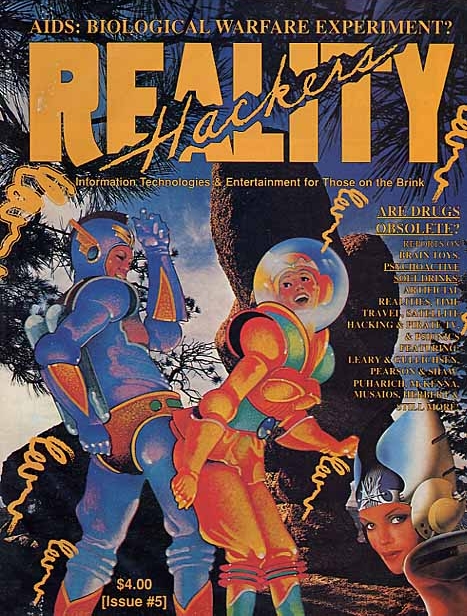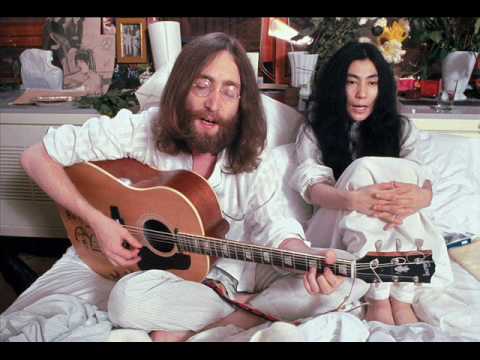H+ The Digital Series — A Review
The first six episodes of the much anticipated transhumanist apocalyptic micro-drama H+ The Digital Series are now out. This is a brief review and set of initial impressions.
Warning: It includes spoilers for all six episodes out so far.
H+ The Digital Series is directed by Bryan Singer (X-men) and distributed online by Warner Brothers in a novel short episode format via YouTube. The series tells the story of a near future world where an Irish corporation known as H+ (H plus) Nano Teoranta has developed a neural implant technology used to link humanity into a global real-time augmented reality.
The short YouTube video format is probably as controversial as the content of the program. Can a 140 character culture relate to characters in 4 minute segments?
The series consists of short YouTube videos lasting about six minutes and each featuring something like 2-3 minutes of time in the fictional world. I found it hard to relate to the characters in this short format especially when you consider that only about four minutes and 30 seconds is the actual programming and the rest is just the intro and outro title sequences.
The first two episodes, “Driving Under†and “On Their Levelâ€, were released first, and these consist of what is essentially the first five minutes of the story. The second batch of episodes, 3-6, were released initially only to subscribers to the program’s YouTube channel. A new episode is to be released every Wednesday.
Episode 1 is set “five minutes before it happenedâ€. We are introduced to the H+ Nano medical implant technology and HPlus Nano Teoranta the company that has developed it. The H+ interface is a sort of real time connected augmented reality system that employs a neural implant rather than glasses. The system creates a personal interface only the user can see and is controlled by hand movements. In addition, the system provides real-time monitoring and feedback of the user’s own biological functions.
The first episode also introduces us to the concept of transhumansim, which in case you weren’t aware is an “international movement that supports the transforming of the human body and thereby the human condition through advanced technologiesâ€.
Singer clearly lines the series up with the cyberpunk tradition, presenting a dystopian near future where tech stocks have tumbled, cybercrime is on the rise, and people are protesting being used in scientific experiments against their will despite the amazing technological advances.
Cut to a couple parking their car in an underground garage at the airport. The wife is interacting with her H+ system via her neural implant as they look for parking. The husband is covertly watching a sporting event via his interface, a fact that upsets his wife and causes an argument between them.
It is, of course, traditional for a geeky review of any new science fiction film or TV program to locate and dissect minute technical flaws in any science or technology described. This review will be no exception.
Not even five minutes in o the series and there is already some problematic stuff. In the H+ series future, we’ve got magical nanotech implants but the cars don’t have autopilot. In fact any sort of AI, a central theme of modern transhumanism, seems to be entirely absent from this H+ world so far.
In reality the husband Lee would just switch on the car’s autopilot and crack open a beer. Yes, in the future it will be legal to drink in a vehicle if you aren’t driving and the cars will be designed such that they won’t let you drive if you do drink.
The H+ implant itself is some sort of near magical nanotechnology allowing direct neural interface without invasive surgery. You simply inject this thing and you become connected to the global hive mind via a neural augmented reality interface. The notion is well beyond the current state of the art. Implantation for example with cochlear implants involves actually cutting open someone’s head and wiring a jack into their skull.
More silliness, the neural interface requires you to move your hands and talk in order to use it. A direct neural interface of this sort will allow thought to be directly transformed into action. That is, you won’t actually need to reach out and touch the imaginary interface, you will simply imagine touching it and the system will sense and respond to the pattern of activity in your brain. Imagine if everyone was waving their hands around in this way. Not only does this look ridiculous, people would slap each other in the face accidentally while using it.
Five minutes and six seconds in, something goes very wrong. People exiting the elevator start collapsing like ragdolls. Someone is running, a car crashes and then an out of control airplane smashes directly into the garage. It’s The Event, a sort of digital viral apocalypse that is going to be the focus of the series.
It is good to get this sort of thing out of the way up front. Singer has an axe to grind. In this vision of H+, transhumanism is bad… really bad. In fact it is the cause of the collapse of civilization and the deaths of millions of people. We can’t have something like direct universal access to the sum total of human knowledge turn out to be a good thing, now can we? It must be dangerous.
Episode 2 expands on the immediate after effects of The Event and introduces us to a few survivors including (naturally) a mysterious man who seems to know more than he should about what is happening.
Episode 3, “The Prophetessâ€, is a flashback to seven years prior to The Event. We get to play voyeur on a first date that ends badly between Manta and Topi. For a minute I thought this was going to veer into WTF territory, but it turns out that Topi is some sort of future cop who is collecting information on Manta. Perhaps Manta is one of those cyber criminals we heard about in episode one? It’s the Girl with the Dragon Tattoo moved to Finland. I wonder if they will include a tango.
Episode 4, “Airport Securityâ€, takes us back to the original timeline and group of survivors, to just 1 minute after The Event. Does anything really happen in this episode? It turns out that the mysterious stranger is (surprise) one of the developers of the H+ technology.
Episode 5, “A Large Familyâ€, is another flashback this time to just seven months before The Event. This seems like it will be a pivotal episode going forward. We meet Breanna, a high powered executive with H+ Nano and and her husband Connal. Breanna is set up to be the evil transhumanist bitch queen, but perhaps they will humanize her later. Or maybe not.
Breanna and her husband meet a young Indian woman Leena to arrange a surrogate pregnancy. But as part of the deal they want Leena implanted with H+ so she can be monitored until the birth. When things get complicated, Breanna ends the conversation and enters a teleconference via her H+ device. Connal and Leena leave to have a more human conversation. I am assuming the baby is modified in some way, possibly to include the H+ interface in the womb or perhaps it will be genetically enhanced in some other way.
Episode 6, “Voci Dal Sud,†Voices from the South, takes us to Italy two years after The Event. Things have gone from bad to worse, and we’re given a picture of a world in collapse with no access to modern medicine or doctors.
It will be interesting to see if there will be additional transhumanist elements beyond those included in the opening few episodes. Covered so far: neural implants, the hive mind and global 24/7 Internet connectivity, augmented reality, computer viruses, apocalypse or singularity — The Event.
Notably absent from the series so far is any appearance of Artificial Intelligence or General Artificial Intelligence, and, in particular, the favorite theme of transhumanists everywhere — the self improving superintelligent AI — is no where to be seen in H+. Ray Solomonoff must be rolling in his grave.
The short format is problematic. About 25-30% of each video is simply the title sequences, which I have now seen six times. This is too much and it is distracting. The total program length of all six videos so far is just about 30 minutes. As a result the majority of the characters haven’t been developed and they are not relatable or interesting, at least not quite yet. I think a somewhat longer length for each program would work better.
Even so, the show is worth watching. The Event and the H+ device are an obvious analogy to our existing world of connected mobile devices, networked economic systems and eCommerce, real time social media, and so on. We don’t have neural implants yet, but we’re already susceptible to infectious viral agents passed by social media. The Event could happen to us.




